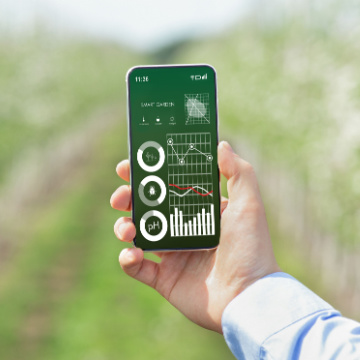Nowadays, a wide range of industries make use of temperature monitoring systems for managing their perishable products as well as high-value assets. Simply put, a temperature monitoring system may be referred to as a resistance temperature detector that can be used for the measurement of temperature in a readable form. They play a critical role in maintaining the quality of goods and products that are sensitive to temperature fluctuations. With the right system, it is possible to customise indicators for maximum and minimum thresholds based on the type of goods or products handled.
Important Components of Temperature Monitoring Systems
Before identifying the right system for your needs, it is helpful to gather some basic information about the most important parts of a typical temperature monitoring system.
- Temperature probe or sensor: Temperature monitoring systems use a sensor to capture temperatures. Thermocouples, RTD sensors, and thermistors.are the most common sensors found in these systems. Thermocouples are least expensive, and suitable for applications that don’t require high accuracy. RTD sensors are more accurate compared to thermocouples, but have a narrow temperature range. These sensors are suitable for freezers and refrigerators. Just like in RTD sensors, the resistance changes with temperature for thermistors. However, their resistance change is non-linear, and hence, these sensors are only compatible with temperature monitoring systems supporting the non-linear resistance curve.
- Thermal buffers: A temperature monitoring system’s accuracy in measuring temperature depends on thermal buffers. Presence of thermal buffers also helps decrease the response time of the monitoring systems. Glycol bottles, nylon blocks, and glass beads are some common examples of thermal buffers.
- Temperature measurement device: Standalone, networked, and wireless are the most common measurement devices used in temperature monitoring systems. Standalone devices require no other device to record or process temperatures. Networked devices can be connected to a server, PC, or cloud for sending and receiving data. Wireless temperature measurement devices offer a wider wireless range and are easy to use. These devices are ideal for application where real-time data needs to be collected from multiple fixed points.
- Data Storage: Depending on the nature of the business, temperature data may have to be stored every hour or even every second. Local memory, local gateway, local PC, and cloud storage are four types of data storage used in temperature monitoring systems. According to your needs, opt for the option that serves you best.
- Alarm: The function of an alarm is to ensure that every alert or danger gets transmitted properly to those running the temperature monitoring system. Alarms must be configured based on the nature of your business.
Features You Need
- Accuracy: This is a must-have for a good temperature monitoring system. Pick your system as per the degree of accuracy required for your specific application.
- Storage Capacity: Temperature monitoring systems are deployed extensively for tracking storage conditions, shipments, and warehouses over several days or even months. Therefore, be sure that your temperature monitoring system has sufficient storage capacity for the entire course of its deployment.
- Battery Life: Long battery life is an extremely important feature because temperature monitoring systems store and monitor data round-the-clock. Some of the latest systems can offer an extended battery life up to a year or more.
- Wireless Transfer of Data: Wireless data transfer is also important because it can send important information from one place to another in seconds without accessing the system in person.
If you have more questions about choosing your temperature monitoring system, please get in touch with our expert technicians at ShockWatch.


